Why do so many flags look the same?
National identity has always been a point of contention throughout the years. It can send a signal to the authorities and government during revolutions. It can unite people against a common enemy and promote national unity in times of crisis. The best symbol for people to rally under at times like these is the national flag, the symbol of a country and everything it stands for. But if this national symbol is so important to a nation, why is it that we can find so many flags which are virtually the same? From the tri-colors of Europe to the color scheme of virtually every African flag, why doesn’t every individual country have its own individual flag? Is it simply coincidence or is there a deeper meaning to it all?
European Stripes
Tri-color flags are just historically easy to make and there are only so many colors that exist. It is also claimed that the three colored stripes were an easy way to reflect the colors of a king or kingdom on battle banners and were eventually adopted as the national flag. Additionally, once one country started making three striped flags, their influence was bound to spread and has consequently set a sort of precedent for how many flags should look.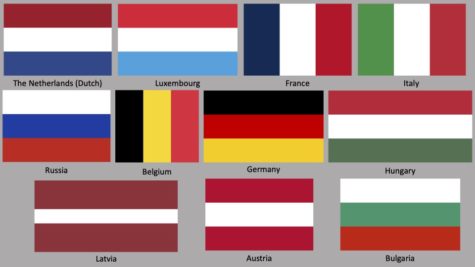
While the origin is debated, the most widely accepted story goes as follows: Originally the Dutch adopted the first tri-color flag in the 16th century. The spread of the Dutch Republic made the flag and its design more widespread as they occupied territory on every continent. Peter the Great of Russia designed the ‘standard’ Russian flag around the Dutch one and the flag of Luxembourg is directly related to the Dutch flag. Eventually, after the French Revolution they adopted a similar flag to the Dutch one only rotated. A Belgian rebellion in 1830 used the French Revolutions flag when they revolted against the Dutch, noticeably with alternate colors. The Napoleonic times saw the evolution of the German flag, based on the Prussian and Hanseatic colors, and the Italian flag, which is directly based on the French one.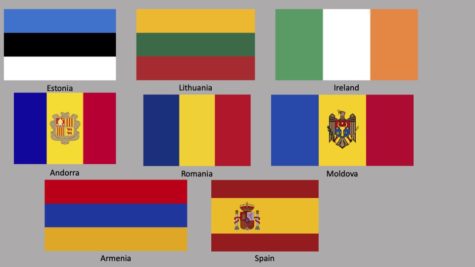
The Spanish flag was created in a flag designing competition although it draws inspiration from naval flag designs. Bulgaria based its flag on the Russian flag and its similarity to the Hungarian one is purely coincidental as Hungary’s flag was influenced by the French flag. Austria and Latvia share similar color schemes which also seem to be coincidental as both flags have roots centuries ago and symbolize different things. Flags such as Andorra, Romania, and Moldova differentiate themselves by featuring their respective coat of arms on their flags.
All in all, the tri-color flag ultimately came from the Dutch and has been spread by influence caused by the proximity, occupation, and friendship between nations.
Pan-Slavic Flag
The Slavic countries have a long shared history of invading and occupying each other as well as similar cultures which both unite them and spark conflicts between them. It is widely believed that the Slavic people originate in Eastern Europe, a region that is still commonly associated with the people. This and other factors lead to The Pan-Slavic Congress of 1848 which officially adopted the red, white, and blue color scheme for their flag.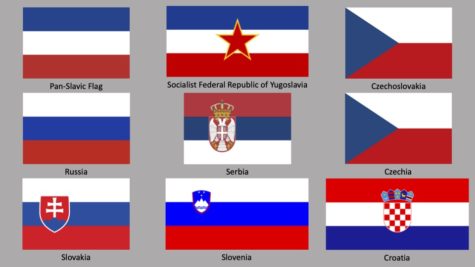
The Pan-Slavic colors were also used later in the flags of Yugoslavia and Czechoslovakia. While both no longer exist, the influences on the countries formed after their disillusionment (Croatia, Serbia, and Slovenia from Yugoslavia; Slovakia and Czechia from Czechoslovakia) retain the colors in their modern-day flags due to their history and cultural ties with Pan-Slavism. The related colors can also be traced back to Russian influence, especially in Serbia, which has left a cultural mark not only on the country but on the design of the flag.
The tri-color backgrounds of every flag are pretty standard but each flag is unique due to the symbols featured near the center of the respective flags. Slovakia, Slovenia, Czechia, and Serbia all feature each country’s national coat of arms, a testament to each country’s individualism and respective history.
Scandinavia
The Scandinavian cross is an easily recognizable symbol. The five nations which use the design have their similarities but are overall their own individual countries with their own cultures. Despite this, they all have the same design on their flags and in some cases the same colors.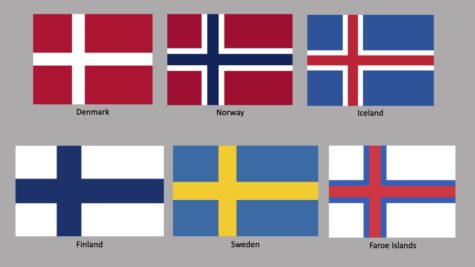
Overall, the flag is meant to represent Christianity by using the Christian symbol, the cross. Denmark was the first to use the cross on their flag in 1219 and as they ruled over the other various nordic countries, a similar flag was adopted by all. All of the Nordic countries have reportedly based their flags on the original Danish ones as the Danish empire once controlled the peninsula. Similarly, Danish territories such as the Faroe Islands also use the Scandinavian Cross on their flags not only as a symbol of Christianity but due to Danish influence.
The use of the Christian cross is not limited to the Nordic countries as similar designs based on religion can be found on the flags of the United Kingdom, Georgia, and Greece. Religion actually plays a major role in flag designs with Islam represented frequently in the Middle East and Judesim appearing on the flag of Israel.
The Rising Sun
While the differences here are far starker, it is interesting to examine the flags of Japan, Bangladesh, and Palau as they all saw the same design. Japan, who had the design first, based it on Japanese mythology. Known as the “Land of the Rising Sun”, Japan’s flag symbolizes the rising sun in the east and represents the sun goddess and founder of Japan “Amaterasu”.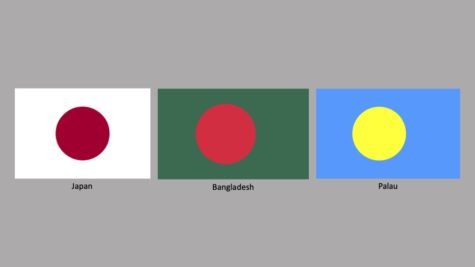
Bangladesh’s flag, designed by Bangabandhu (an independence leader and president of Bangladesh), also represents the rising sun. Bangabandhu has commented on how he designed the flag based on the Japanese one due to the country’s close bonds. Japan was the first to recognize an independent Bangladesh and Bangladesh sent aid to Japan after the Great East Japan Earthquake. Palau, despite its similarities, is the polar opposite of Japan and Bangladesh as the yellow circle on their flag represents the moon, a symbol of peace and good harvest.
United Provinces of Central America
Ending in 1840, the United Provinces of Central America (UPCA) was a union of the central American countries including Guatemala, Honduras, El Salvador, Costa Rica, and Nicaragua. 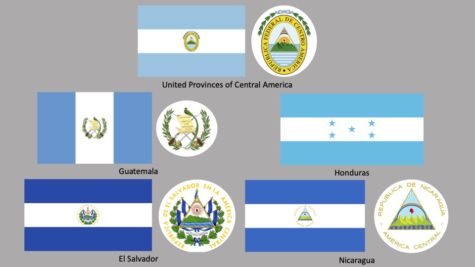 Despite the Union’s non-existence today, the influence of the organization lasts within the flags of the various member countries.
Despite the Union’s non-existence today, the influence of the organization lasts within the flags of the various member countries.
While Costa Rica has changed their flag significantly, other former member countries have clear connections to the flag of the UPCA through not only the color scheme but also through the symbols. El Salvador and Nicaragua have retained the symbol of the UPCA while Honduras includes five stars each representing a former nation of the UPCA.
Gran Colombia
The Republic of Columba in the 1820s (called Gran Colombia) spanned modern Colombia, Panama, Venezuela, and Ecuador. 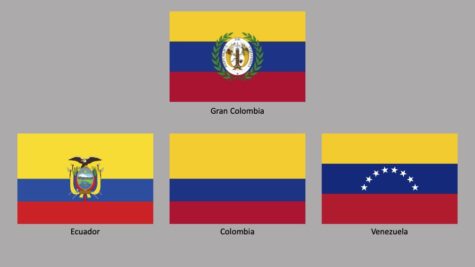 While Panama is unique from the other countries listed, Venezuela, Ecuador, and Columbia all have Gran Columbia influences in their flags. Shown predominantly through the color scheme, the countries differentiate themselves with symbols such as Venezuela’s eight stars (each representing a Venezuelan province) and Ecuador’s coat of arms.
While Panama is unique from the other countries listed, Venezuela, Ecuador, and Columbia all have Gran Columbia influences in their flags. Shown predominantly through the color scheme, the countries differentiate themselves with symbols such as Venezuela’s eight stars (each representing a Venezuelan province) and Ecuador’s coat of arms.
Pan-African Flags
While there is an undeniable variety in the African flag designs, the commonality of the color schemes is interesting, especially as it spans continent-wide. 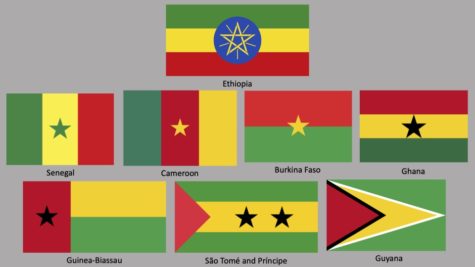
Ethiopia started this color ‘trend’ by using green, yellow, and red on their national flag. Ethiopia was never colonized by a European power and therefore its national flag was a true symbol of Africa. The colors eventually became known as the Pan-African Colors and have been used in several other African flags as they gained independence. 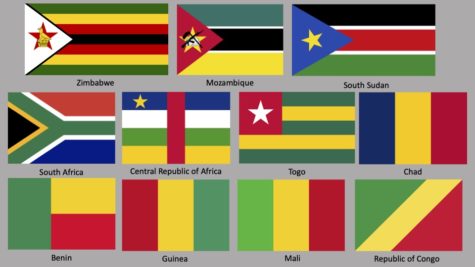
Designs vary due to a country’s individual history but all use the Pan-African colors to symbolize Africa without European control. Senegal and Mali were initially part of the same country, the Mali Federation, and therefore have similar flags because of their history together. Chad originally had the Pan-African colors but switched the green for blue after realizing it was too similar to other flags such as Sgeanal and Mali. The flags of Ghana, Guinea-Bissau, and São Tomé and Príncipe feature the Black Star of Africa which represents emancipation.
Pan-Arab Flags
Similarly to the Pan-African flags, Pan-Arab flags share three main colors and are all based around the same flag. The origin colors themselves (red, white, green, and black) are disputed, although it is commonly accepted that they are traditional Arabic colors from Islam and date back to the time of the Prophet Mohamed. 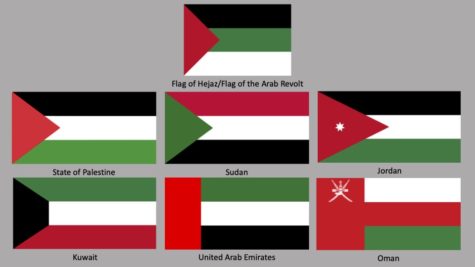
The original flag comes from The Arab Revolt in 1916 against the Ottoman Empire and is called the flag of Hejaz. While the Revolt did not completely free Arabic countries from occupiers (the British controlled countries after the Revolt including Syria and Iraq) as each country has gained independence, they have adopted the Pan-Arab colors. “Of the 22 members of the Arab League, 10 use the green, white, black, and red.”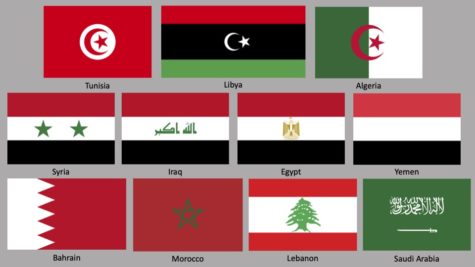
The variations in flag designs reflect the histories of each country as well as their cultures. There are Islamic symbols incorporated into many flags such as Tunisia, Algeria, and Libya which all include the star and crescent. Tunisia also reflects its history through its flag with the red representing the Ottoman Empire as resistance to the Turks. Egypt has a more local symbol with the Eagle of Saladin, a Muslim warrior who held power in Egypt. Similarly, Lebanon features the Cedar tree, a local symbol of Maronite Christians.
No Association
Unfortunately, the reason why many flags are similar simply lies in coincidence. Despite our interconnected world, there have still been some interesting chance similarities in flags from two different sides of the earth. While there are seemingly hundreds of examples, the following are probably the starkest.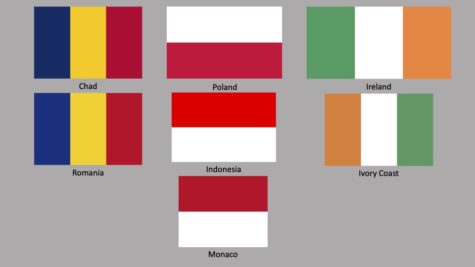
Chad and Romania are virtually the same. While Romania boasts a lighter color, the blue, yellow, and red combination is almost comically identical. But the Romanian flag originated in 1861 while, as mentioned before, the Chad flag represents the Pan-African colors and was not adopted until 1959.
Poland, Indonesia, and Monaco share the same two colors for their flags and only differentiate each other based on size and color order. It’s unbelievable that all three of these countries developed their flags independently of each other but “Monaco’s flag is based on the heraldic colors in the shield of the Monegasque princely arms, – the flag of Indonesia dates back to its association with the Majapahit empire”, and the flag of Poland can be traced back the Polish national coat of arms. In short, a national history which dates back hundreds of years.
And finally, Ireland and the Ivory Coast, whose resemblance baffles citizens and foreigners alike. The Irish flag was introduced in 1848 by members of the Young Irelanders Movement (a group of Irish nationalists) and adopted as the country’s official flag in 1916. It reportedly symbolizes the Catholics (green) and protestants (orange) and the hope for peace between them (white). The Ivory Coast, on the other hand, did not adopt its flag until it gained independence from the French in 1959. Their painfully similar design is representative of the African savanna (orange), peace (white), and hope (green).
Flags represent a country’s story and draw from cultural, religious, and historical influences to truly represent their people. The complicated history of regions, war, occupation, and friendship are all represented in a nation’s flag and stand as a testament to the perseverance of a nation and each individual culture and identity.

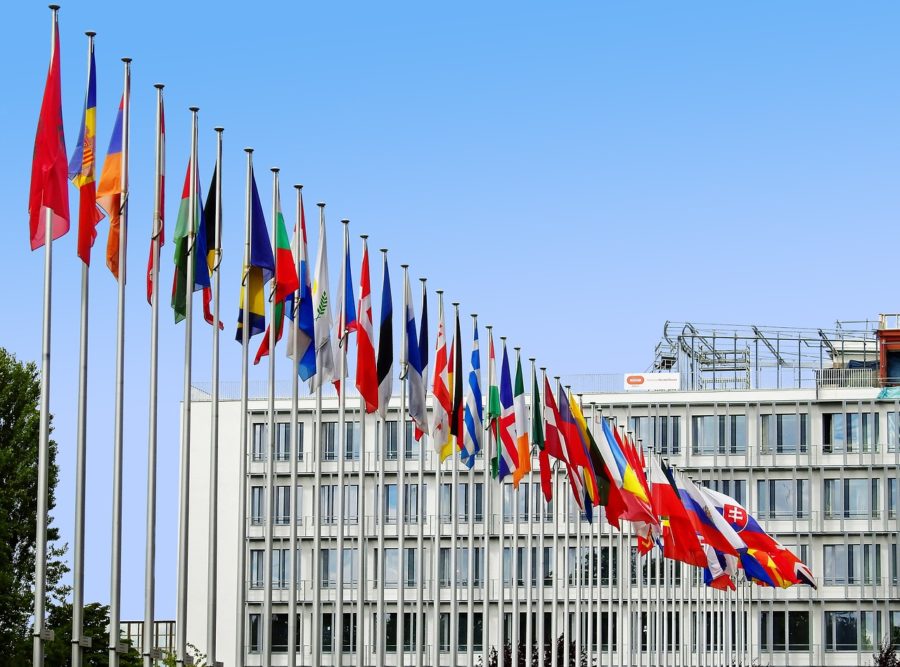


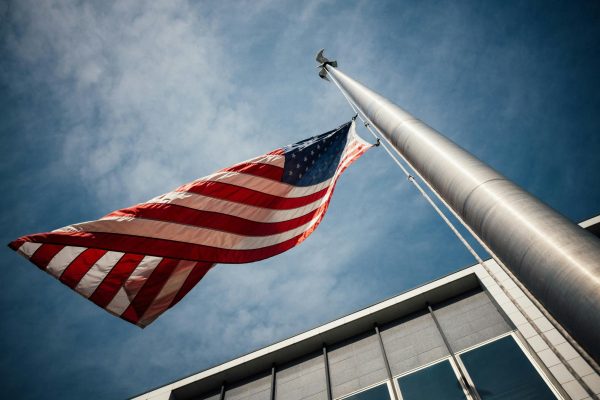
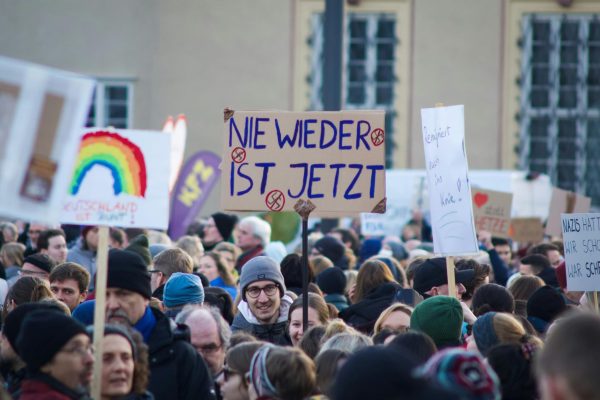
Heidi Hersant • Nov 1, 2023 at
The groupings of flags make so much sense. Thank you for showing the relationships and meaningful connections.
Mr. Sarstedt • Jun 19, 2023 at
Really interesting article! Virkelig interesant artikel. Tusind tak.